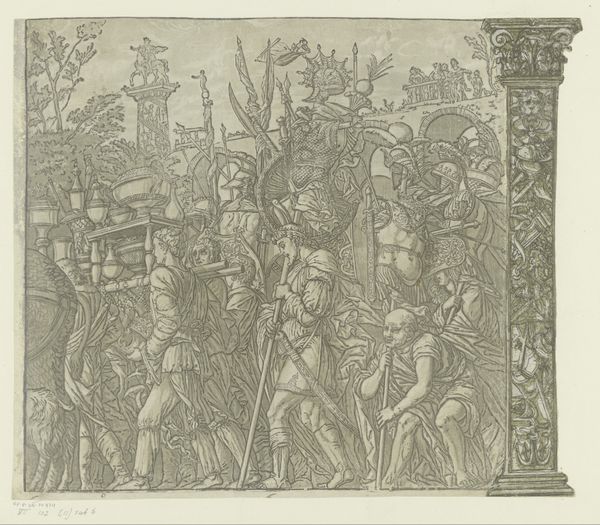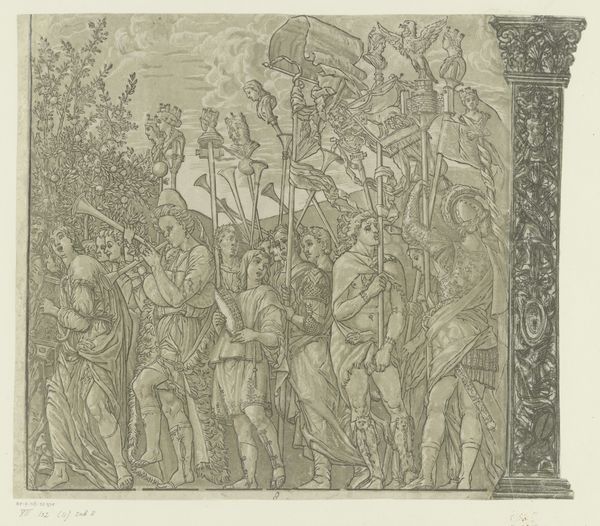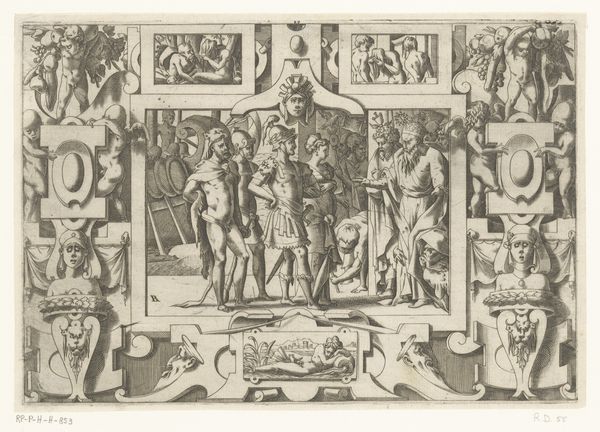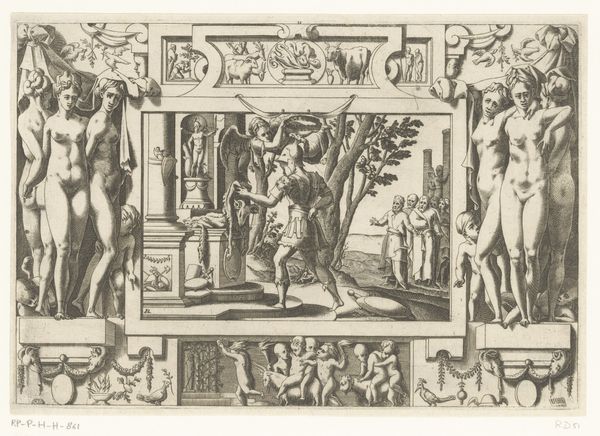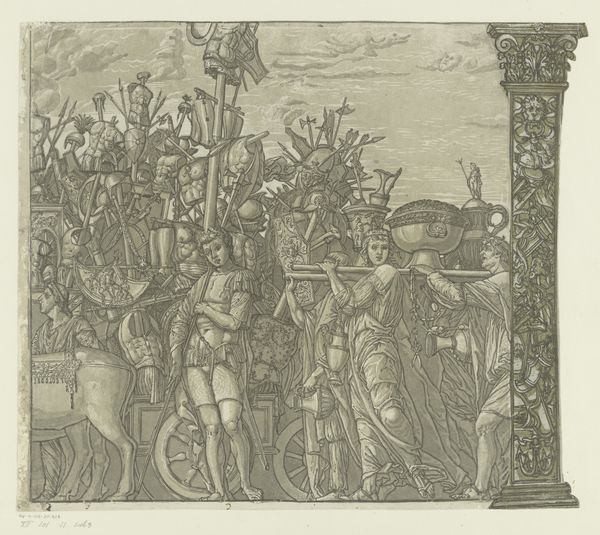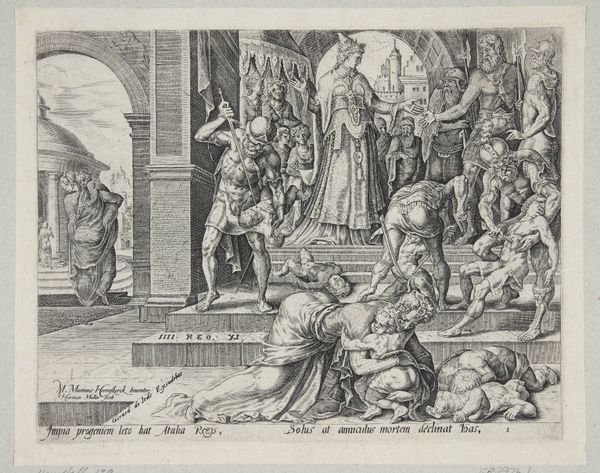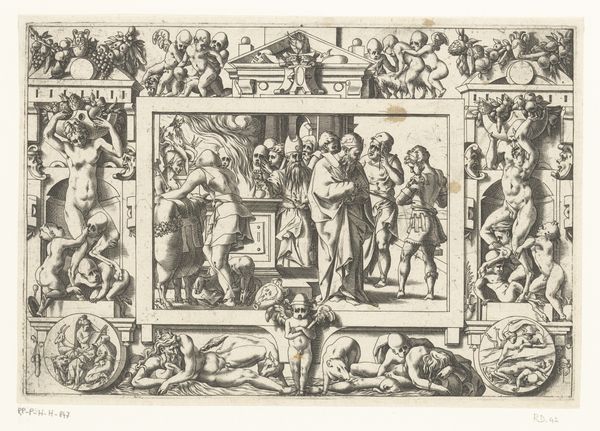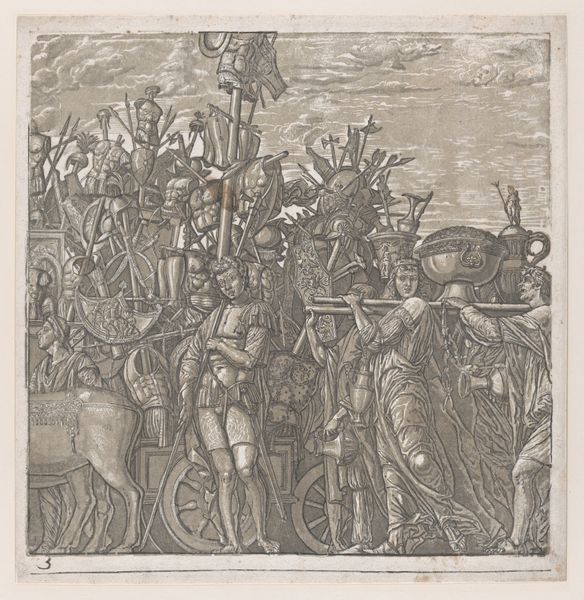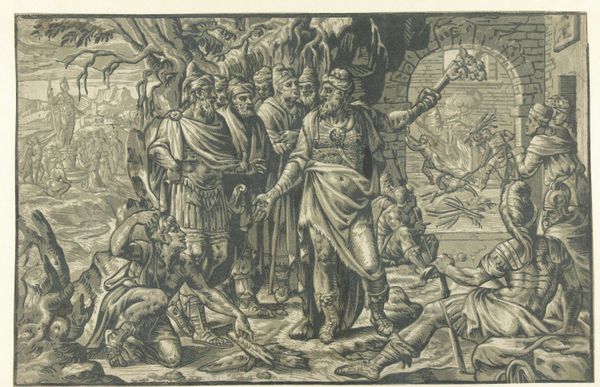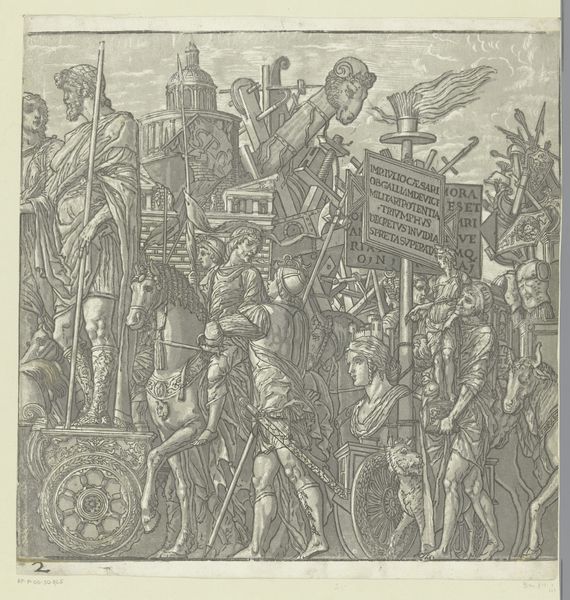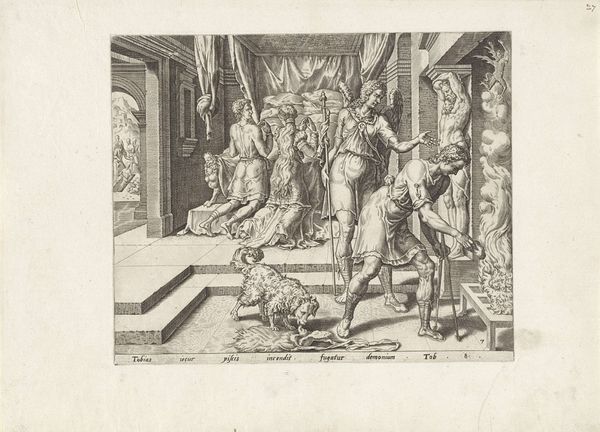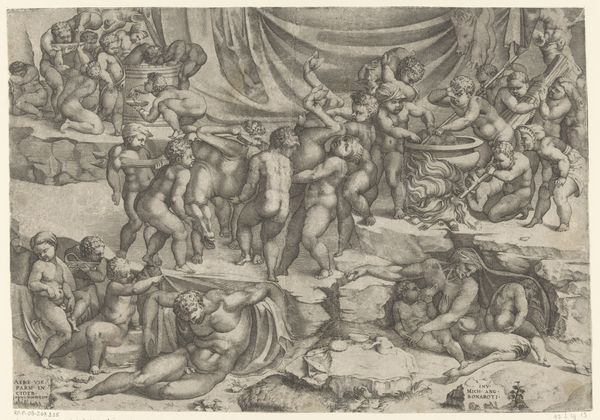
print, engraving
#
pen drawing
# print
#
pen illustration
#
pen sketch
#
figuration
#
11_renaissance
#
line
#
history-painting
#
italian-renaissance
#
engraving
Dimensions: height 374 mm, width 405 mm
Copyright: Rijks Museum: Open Domain
Curator: Here we have Andrea Andreani’s “Triumph of Julius Caesar,” a remarkable print created in 1599, now residing here at the Rijksmuseum. Editor: Immediately, I’m struck by the procession—the elaborate pageantry. The elephants especially, feel incredibly weighty, monumental. Curator: Indeed. Andreani, a master of chiaroscuro woodcuts, achieves that effect through the careful manipulation of line and tone. Notice how the cross-hatching defines form, creating depth and shadow. The artist really used this to play with space and emphasize certain figures, allowing light to guide the eye throughout the piece. Editor: Beyond the formal brilliance, it’s also a fascinating catalogue of Roman Imperial imagery. The elephants, of course, signify military might and exotic conquest. And look at the figures themselves – so many are carrying tributes. The repeated inclusion of flora suggests wealth and success. It really builds a very powerful sense of ceremony, doesn't it? Curator: Absolutely. The composition is not merely decorative; it’s deliberately constructed to convey power. See how the artist positions Caesar to make our eyes wander on a cyclical trip around the scene and remain locked on him? Editor: There’s an almost theatrical quality to it, a staged presentation of authority. That heavy column on the right reinforces that sense of established power. It almost acts as a border, dividing the known and the unknown. Curator: Precisely! The texture and patterns within it almost mimic the detail we can see within the figures themselves, giving it a human quality in its complexity. Editor: Examining the details of this 16th century print gives the feeling that Andreani wanted us to think about what triumph means—both for the victorious leader and for the subjugated populace. The image continues to carry echoes through our collective cultural memory, centuries later. Curator: A demonstration of artistic mastery combined with great historical and symbolic depth. It really draws the viewer in, offering so much upon each viewing. Editor: Definitely worth another, closer look to find the nuances one may have previously missed!
Comments
No comments
Be the first to comment and join the conversation on the ultimate creative platform.
